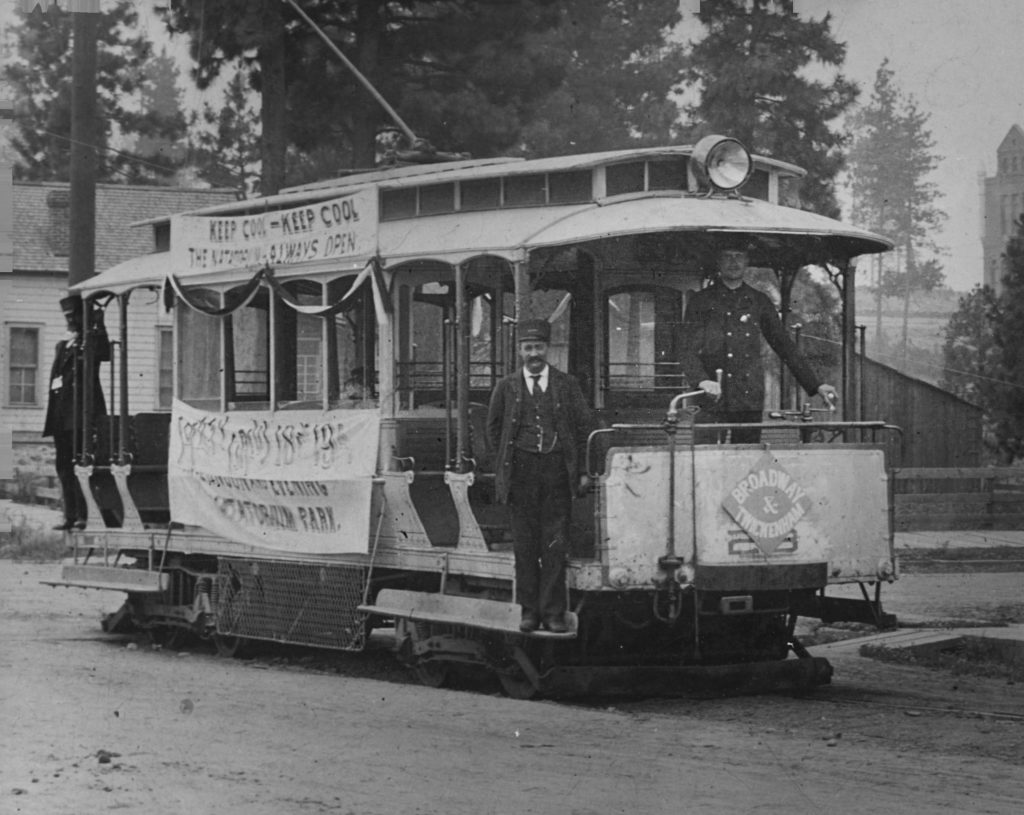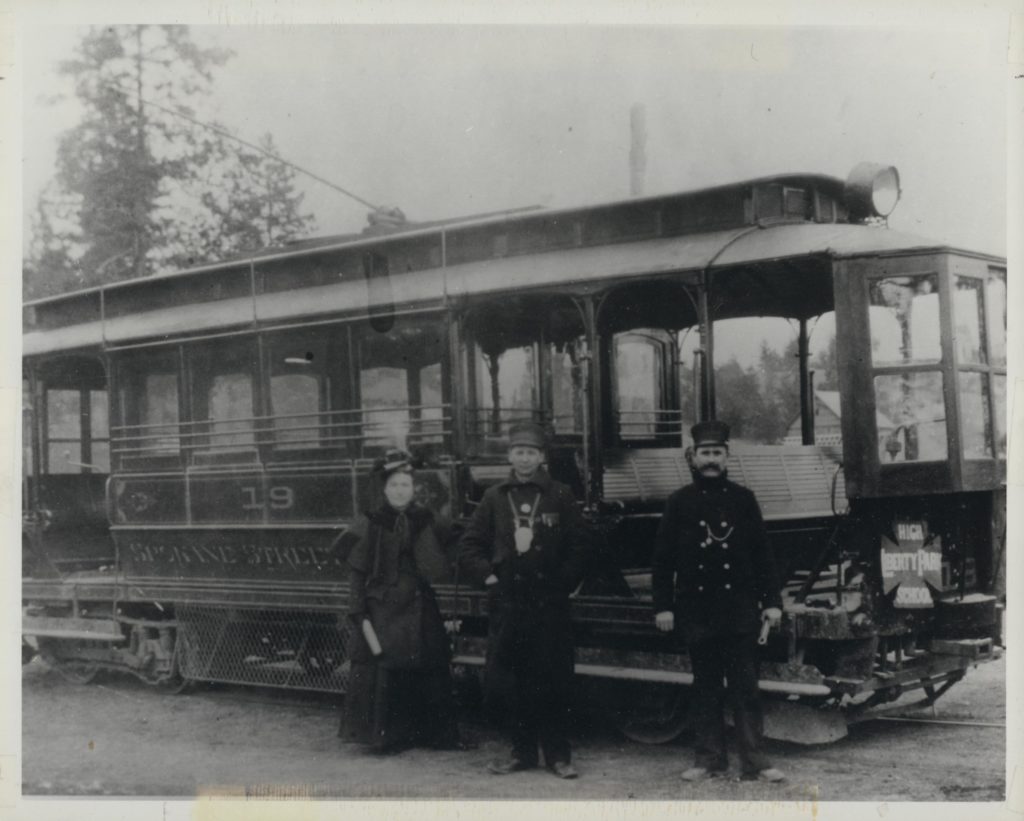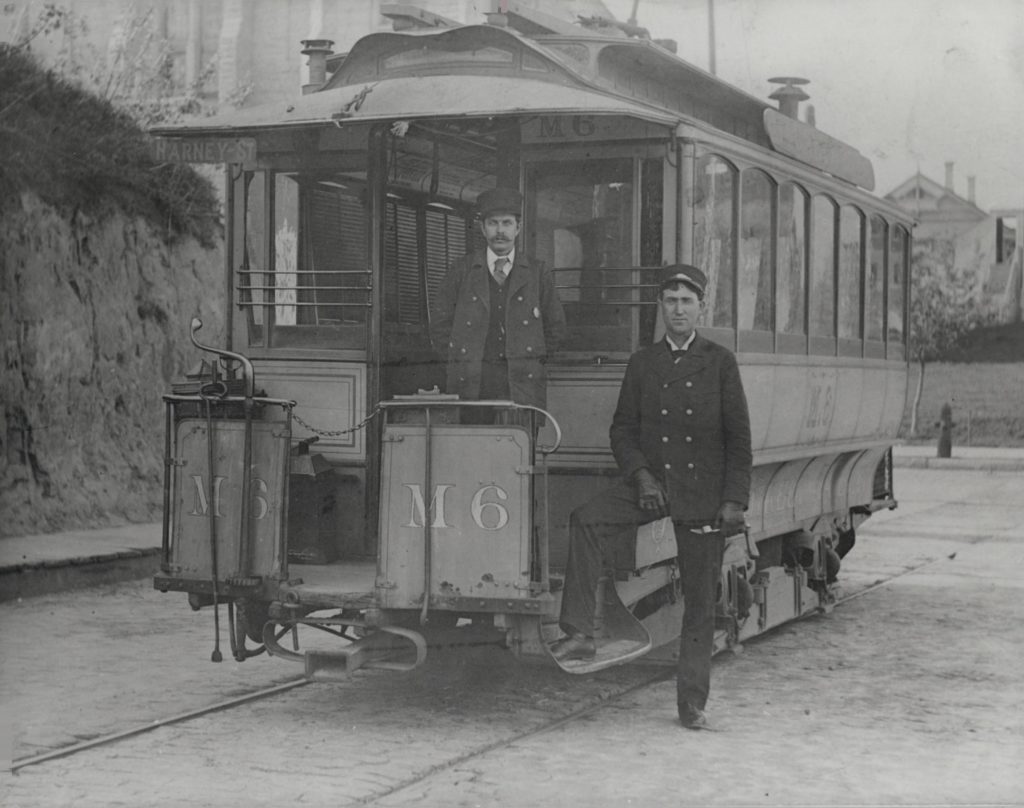Today’s Spokane Trolley Trail seems rather disconnected; going from one out-of-the way road to another, it’s a nice but somewhat confusing stretch of urban solitude. The flat, wooded trail—used now by runners, mountain bikers, and equestrians for recreation—is a relic from the electric trolley heyday of Spokane. It spans what was once the Washington Power/Medical Lake Railroad bed, which transported Spokanites via electric trolley from downtown Spokane into Medical Lake or Cheney in the early 1900s.
Our modern-day recreational trail seems isolated because many of the operating rail line connections are no longer obvious. The Grandview/Thorpe neighborhood, where the 1.5-mile stretch of trail still exists, was connected to downtown Spokane via a long, wooden trestle built in 1904 to cross Latah Valley. The rail line climbed from the trestle to the Garden Springs station, then rose along the edge of the Grandview bluff and into the western plains on the way to Cheney. Most of the evidence of this old rail line has been lost to development or private property.

So, just how popular was this trolley route back in the day? Operating from 1905 to 1922, the trolley of the Trolley Trail ran eleven passenger trains a day at its peak. It transported as many as 4,000 people on busy holiday weekends like Fourth of July, as trolley riders sought a pleasure resort at Medical Lake where they could swim or take a cruise in an electric boat. Another incentive to ride this route was that Medical Lake and Cheney were “dry” towns in 1909 and 1910, while Spokane was “wet.” Up until Washington State voted to go dry in 1916, the trolley line was nicknamed the “suitcase special,” as some passengers had the habit of sneaking booze from Spokane to Cheney in suitcases.
Spokane’s electric trolley systems were maintained largely by the Washington Water Power Company (now Avista) into the 1930s, but they lost their popularity with the rise of personal automobiles. At the height of trolley popularity around 1910, there were 150 trolley cars and 24,000,000 riders. Fares were a nickel, and transfers were free. With the trolley system, a rider could travel all the way from Cheney to Coeur d’Alene, and many trolleys were used to transport businessmen, freight, or lake-goers on a day trip. The very last trolley car of Spokane United Railways was retired in 1936 in style—residents filled the wooden trolley with hay bales and lit it on fire.

As with the trolley system at large, the Trolley Trail route declined with the rise of motorcars and road development throughout Spokane. What was once a booming network of transportation from the heart of the city to its rural outposts was picked clean of its metalwork in a matter of years, leaving behind the flat, smooth rail beds that would be overgrown, developed, or maintained for recreation. Local residents rallied to preserve a section of the Medical Lake electric line, which exists as the Trolley Trail today.
“I think [the Trolley Trail] is unique because it occurred during a time when rail traffic was the primary transportation mode,” says Spokane resident Dan Schaffer, who has helped with modern-day maintenance of the Trolley Trail. “Spokane was a hub of rail lines, so it’s a unique part of the history, even though it didn’t last long. By the [late] ‘20s, it was all gone.” The Trolley Trail is now managed by the City of Spokane Parks and Recreation. With close access to Fish Lake Trail (another trail that was born from the bones of an abandoned rail line), the Trolley Trail is a nice detour for mountain bikers or runners looking to get some dirt under their tracks. Next time you’re running or wheeling along the Trolley Trail, imagine the past residents of Spokane peering across the valley as they rolled between towns on the most modern mode of transportation around.













